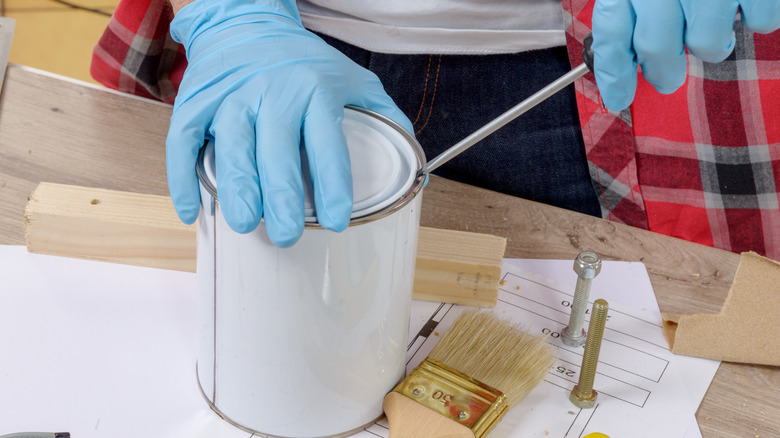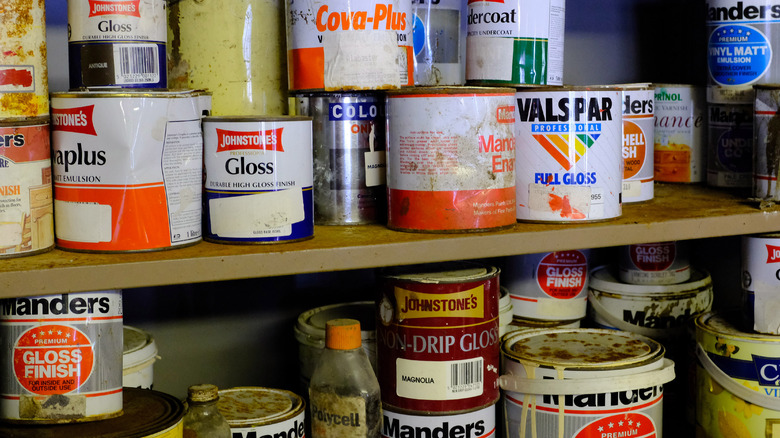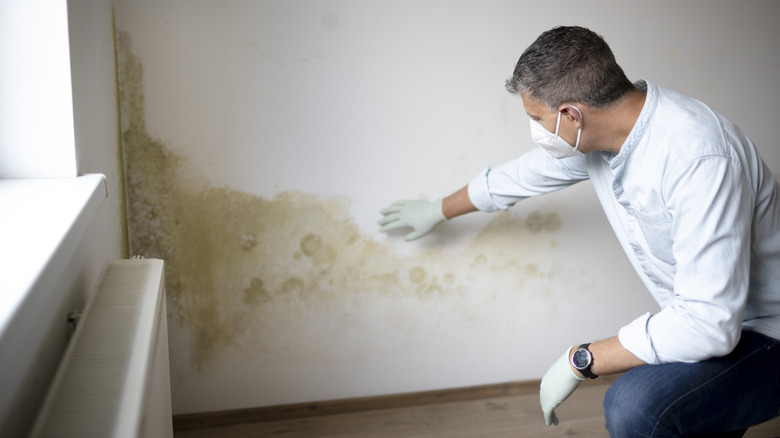What To Do If You Find Mold In Your Paint Can
The presence of mold in your paint can be a startling revelation. if you discover mold growing inside your can of wet paint, you need to refrain from using it. Don't take any risks — dispose of it right away. Aside from the immediate visual displeasure, mold in paint poses a series of challenges that can affect your project's outcome and, more crucially, your well-being. Mold feeds on synthetic materials, and it may compromise the quality and longevity of your paint. This means that an otherwise pristine paint job might show signs of deterioration much earlier than you'd expect, pushing you towards another round of painting far sooner than you'd like.
Further, mold's impact isn't limited to aesthetics or paint quality alone. From a health perspective, the stakes are even higher. When dispersed in the air and inhaled or when in contact with your skin, mold spores can unleash a slew of health problems. These range from allergic reactions to more acute respiratory distress. The repercussions can be particularly severe for those with mold sensitivities or pre-existing respiratory ailments. In the case that you've already used moldy paint without knowing it, with the right procedures, you can still rectify the issue.
Understanding why mold appears in paint
When you store paint, it's important to recognize that mold development can be a real concern, especially if the paint is kept in less-than-ideal conditions. Paint cans that aren't sealed correctly or that sit in damp, humid spots can easily become magnets for unwanted mold growth. You might be surprised to learn that the very ingredients in your paint can actually nourish mold spores. Within paint, there's a solvent that provides its liquid consistency — when exposed to temperatures below 50°F, this solvent can freeze. Conversely, at elevated temperatures, it's prone to evaporation. Such temperature extremes can compromise the paint's quality and performance. When combined with moisture, this can set the stage for mold growth.
Moreover, mishandling paint can increase its susceptibility to mold. Something as seemingly innocuous as introducing contaminants, like a little dirt, into the paint can dramatically change its environment. This minor contamination can accelerate mold and fungal growth. Such growth isn't just a visual nuisance; it may also lead to the release of harmful substances like mycotoxins. Any dirt or foreign elements can compromise the paint's composition, fostering an environment ripe for undesired microbial activity. For these reasons, it's imperative to treat your paint with respect.
How to remedy moldy paint
If you've painted your walls and then discovered mold lurking in your paint can, don't worry. You've probably got the tools to get rid of mold right in your kitchen pantry. First, create a cleaning solution by combining two spoonfuls of borax with a quarter cup of white vinegar. Mix this with two cups of warm water in a mixing bowl. This blend harnesses the mold-fighting powers of both borax and vinegar to create a formidable enemy against that stubborn mold.
Take a scrubbing brush or cloth and fully submerge it in the mixture to ensure it's soaked through, then scrub the mold-infested areas of your wall with strong, determined strokes. When you've done a thorough job, reapply your homemade cleaner generously over the areas you've just scrubbed. Let it sit there for approximately 15 minutes to ensure the solution penetrates into the wall, effectively killing any lingering mold spores. Finally, take a clean cloth, dampen it slightly with water, and gently wipe down the treated sections of your wall. This removes any remaining solution and leaves your wall not only mold-free but also spotlessly clean.


